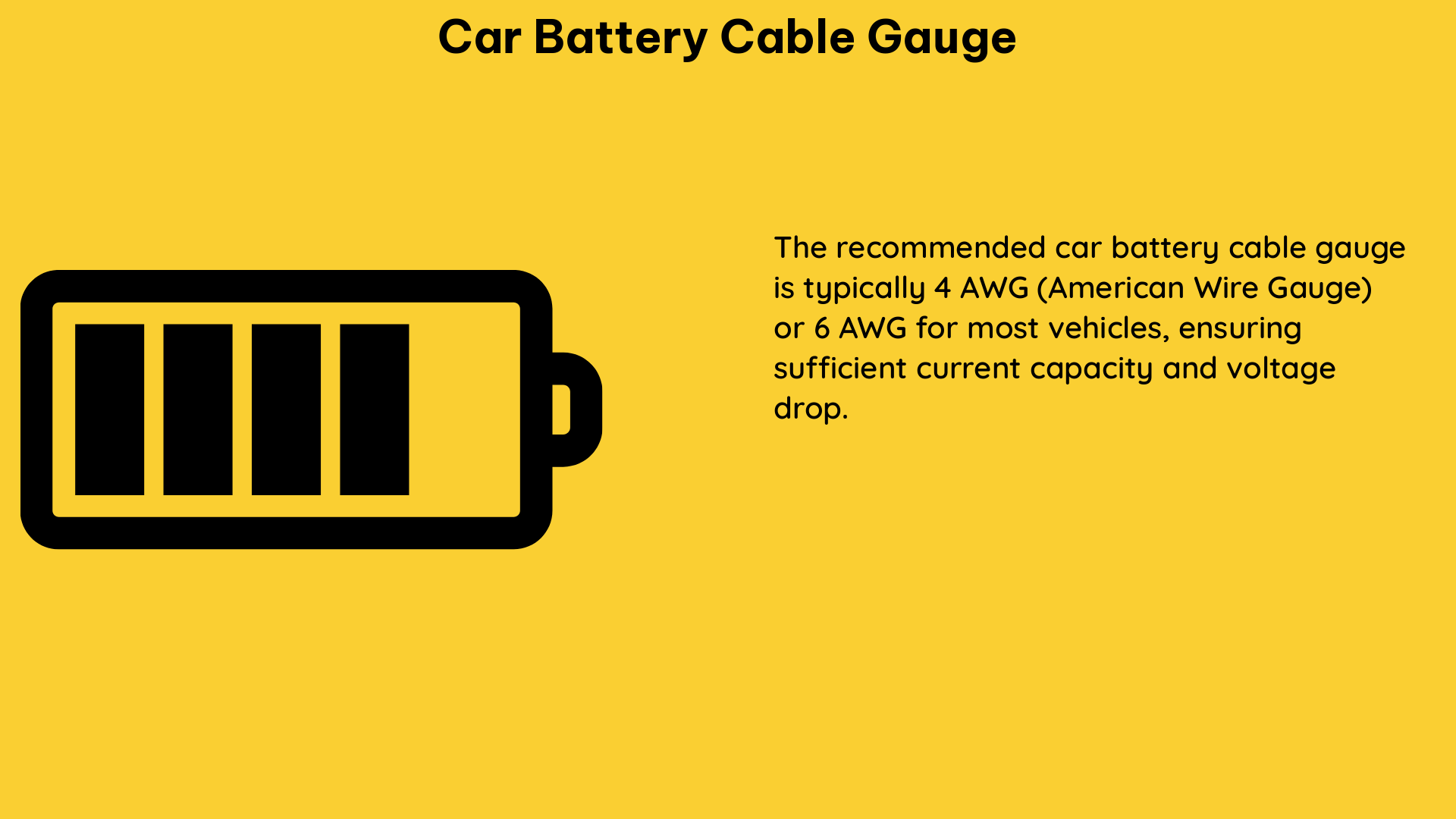The selection of the appropriate car battery cable gauge is crucial for ensuring the reliable and efficient operation of a vehicle’s electrical system. This comprehensive guide delves into the technical details, recommended specifications, and best practices for choosing the right battery cable gauge to meet your specific automotive needs.
Understanding the American Wire Gauge (AWG) System
The American Wire Gauge (AWG) system is the standard used to measure the diameter of electrical wires, including car battery cables. The AWG chart provides a clear correlation between the gauge size and the physical properties of the wire, such as diameter, insulation thickness, and approximate weight. This information is essential for understanding the capacity and performance of the cable.
| Gauge | Diameter (inches) | Insulation Thickness (inches) | Approximate Weight (lbs/1000 ft) |
|---|---|---|---|
| 2/0 | 0.570 | 0.130 | 458 |
| 1/0 | 0.508 | 0.120 | 364 |
| 1 | 0.453 | 0.110 | 289 |
| 2 | 0.404 | 0.100 | 229 |
| 4 | 0.320 | 0.090 | 144 |
| 6 | 0.254 | 0.080 | 91 |
| 8 | 0.202 | 0.070 | 57 |
| 10 | 0.160 | 0.060 | 36 |
Recommended Gauge Sizes for Automotive Applications

The choice of the appropriate battery cable gauge size depends on the specific requirements of the vehicle and its electrical system. Here are the recommended gauge sizes for common automotive applications:
- Starter Cables: 2/0 or 1/0 gauge
- Alternator Wiring: 4 or 6 gauge
- Accessory Leads: 6 or 8 gauge
- Ground Cables: 4 or 6 gauge
It’s important to note that these recommendations are general guidelines, and the actual gauge size may need to be adjusted based on factors such as the length of the cable run and the total electrical load.
Considering Cable Length and Electrical Load
The length of the cable run is a crucial factor in determining the appropriate gauge size. For longer cable runs, it is recommended to use a larger gauge size to ensure adequate current flow and minimize voltage drop. As a general rule, for every 10 feet of cable length, it is advisable to go up one gauge size.
Additionally, the total electrical load of the vehicle’s electrical system should be taken into account when selecting the battery cable gauge. Higher electrical loads, such as those found in vehicles with extensive aftermarket accessories or modifications, may require larger gauge cables to handle the increased current demand.
Technical Specifications for Automotive Battery Cables
Automotive battery cables are designed to meet specific industry standards and requirements to ensure their durability, flexibility, and resistance to environmental factors. The SAE J1127 standard outlines the technical specifications for various types of battery cables, including:
- Synthetic Rubber Insulated Cables: Designed for high-temperature and oil-resistant applications.
- Thermoplastic Insulated Cables: Offer a balance of flexibility, durability, and resistance to chemicals and abrasion.
- Cross-Linked Polyethylene Insulated Cables: Provide superior resistance to heat, chemicals, and abrasion.
These specifications ensure that the battery cables can withstand the harsh conditions encountered in automotive applications, such as exposure to high temperatures, oil, and other environmental factors.
Maintaining Clean and Corrosion-Free Connections
In addition to selecting the appropriate battery cable gauge, it is crucial to maintain clean and corrosion-free connections at the battery terminals and cable ends. Over time, these connections can accumulate corrosion, which can lead to a decrease in electrical conductivity and potential electrical issues.
To clean the battery terminals and cable connections, use a wire brush or a battery terminal cleaning tool to remove any visible corrosion. Then, apply a battery terminal protector or a dielectric grease to prevent future corrosion. This simple maintenance task can help ensure the longevity and efficiency of the battery cables and the overall electrical system.
Conclusion
The selection of the correct car battery cable gauge is a critical aspect of maintaining a reliable and efficient electrical system in your vehicle. By understanding the AWG system, recommended gauge sizes for various automotive applications, the impact of cable length and electrical load, and the importance of maintaining clean and corrosion-free connections, you can ensure optimal electrical performance and prolong the lifespan of your battery cables.
Remember, always consult the manufacturer’s recommendations or a qualified automotive electrician when selecting and installing battery cables to ensure the safety and integrity of your vehicle’s electrical system.
Reference:
- Battery Cable Size Chart | Battery & Cable Questions | 2/0 Gauge
- Automotive Battery Cable Specifications & Overview – IEWC.com
- What Battery Cable Size Should I Use? | Battle Born Batteries

The lambdageeks.com Core SME Team is a group of experienced subject matter experts from diverse scientific and technical fields including Physics, Chemistry, Technology,Electronics & Electrical Engineering, Automotive, Mechanical Engineering. Our team collaborates to create high-quality, well-researched articles on a wide range of science and technology topics for the lambdageeks.com website.
All Our Senior SME are having more than 7 Years of experience in the respective fields . They are either Working Industry Professionals or assocaited With different Universities. Refer Our Authors Page to get to know About our Core SMEs.